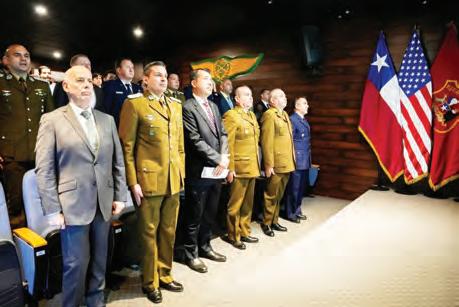TRAVIS TAILWIND
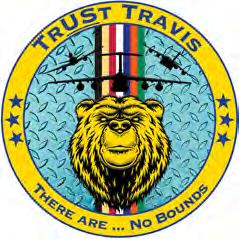



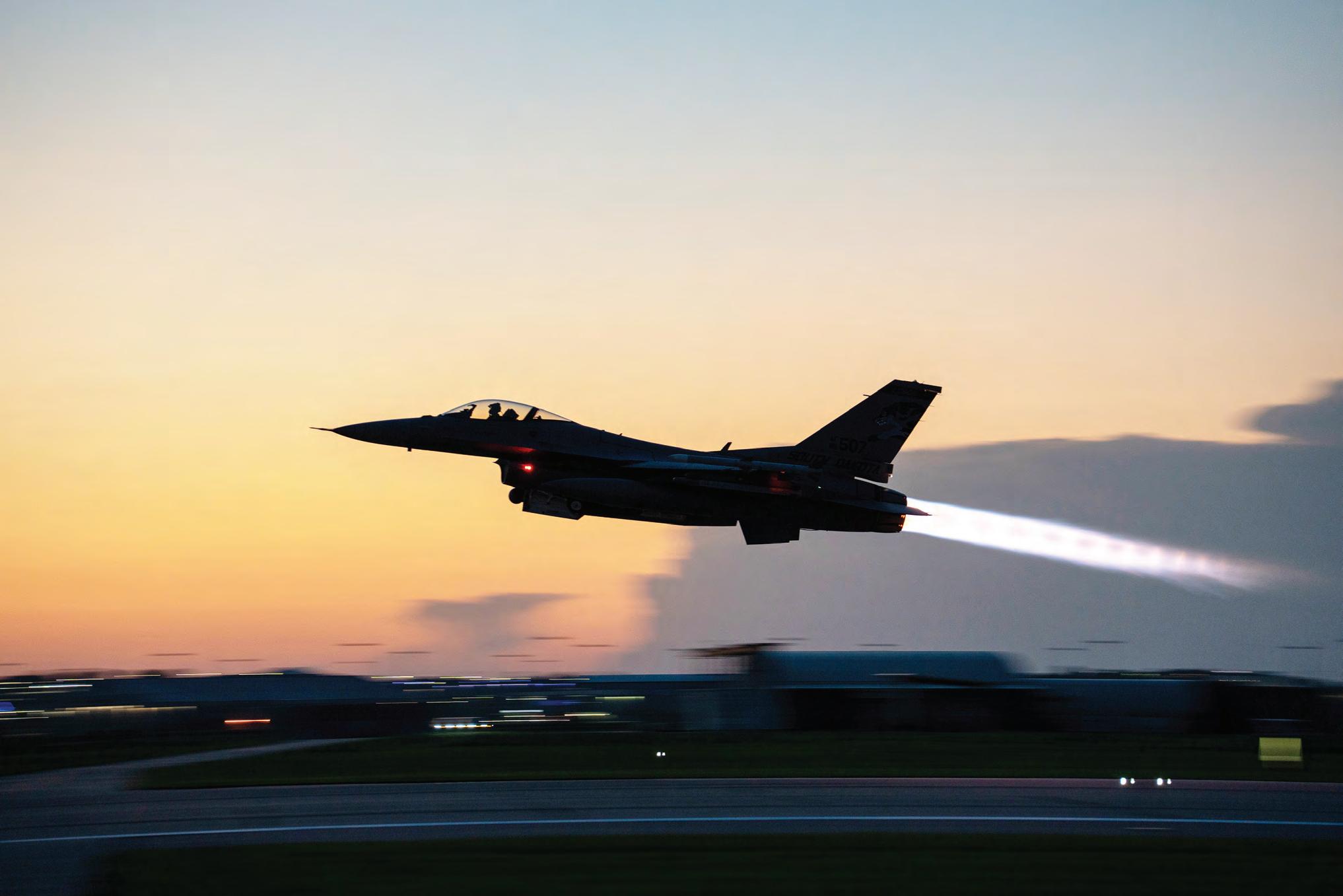
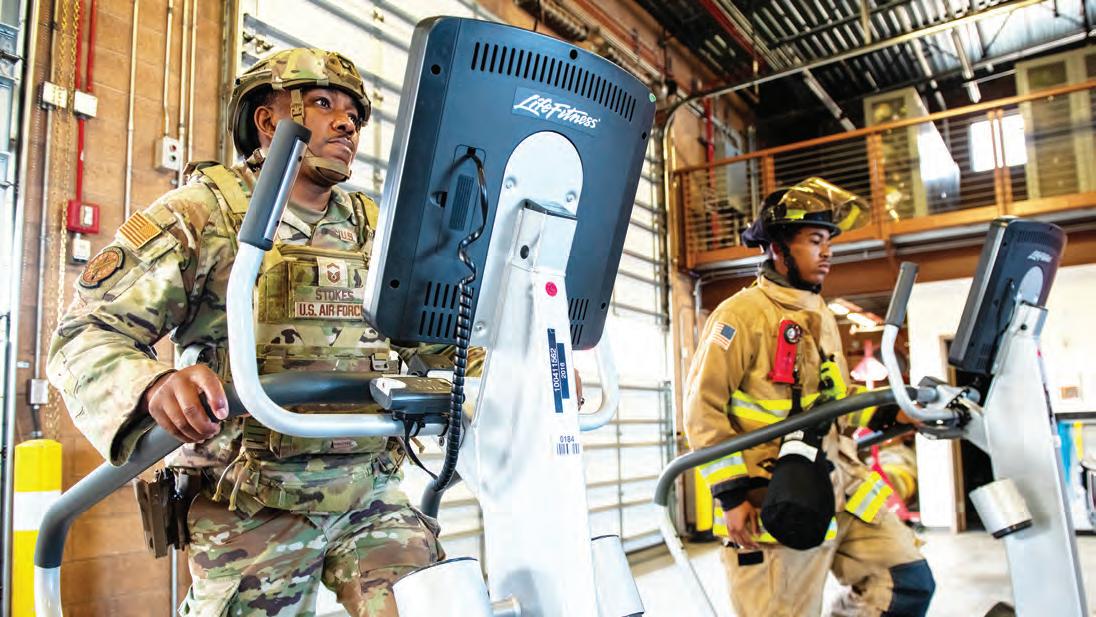

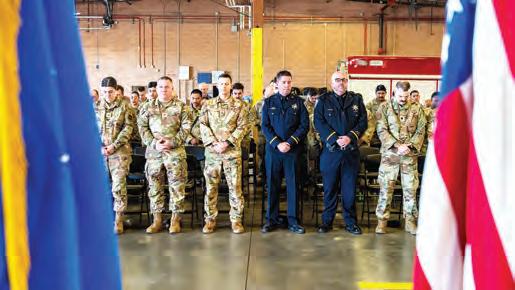
— On Sept. 12,
the first General Dynamics F-111 Aardvarks arrived in Upper Heyford, United Kingdom, marking a new era in European airpower.
The aircraft was assigned to the 79th Tactical Fighter Squadron, 20th Tactical Fighter Wing under U.S. Air Forces in Europe. At the time of the transition, the 20th TFW was still flying the North American F-100 Super Sabre, the oldest fighter in USAFE’s inventory.
The F-111 replaced it with unmatched capabilities. It was the first production aircraft with variable-sweep wings, giving pilots the ability to adapt wing position to maximize performance during high-speed, low-level flight. The F-111 entered service in 1967, with early combat use in Vietnam, and later proved itself in major operations such as El Dorado Canyon in 1986 and Desert Storm in 1991.
USAFE’s F-111s and EF-111 “Ravens” became symbols of Cold War deterrence and precision strike capability. In Libya, they flew what was then
See F-111, Page 6
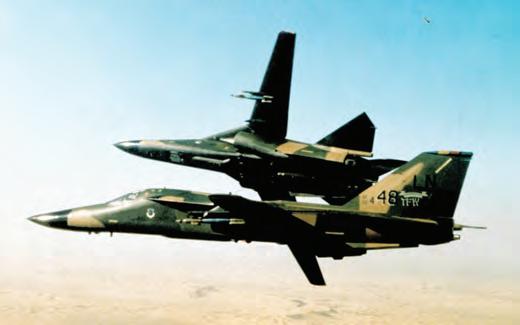
Lt. CoL. Peter MCGavin
621ST AIR MOBILITY OPERATIONS SQUADRON
JOINT BASE
MCGUIRE-DIX-
LAKEHURST, N.J. —
22 members of the 621st and 321st Air Mobility Operations Squadrons, along with six guard and reserve personnel, deployed as command and control experts in support of the annual multinational exercise ULCHI FREEDOM SHIELD ’25.
Held every year since 1976 (except during Covid-19), UFS ’25 marks nearly 50 years of regular U.S.-Republic of Korea cooperation. The exercise is conducted in support of the U.S.-ROK Mutual Defense Treaty signed on Oct. 1, 1953. UFS ’25 showcases the defensive alliance and resiliency of the Republic

Serving
of Korea, U.S., and United Nations Forces Command in a highly dynamic operational environment encompassing simulated events with a small live component.
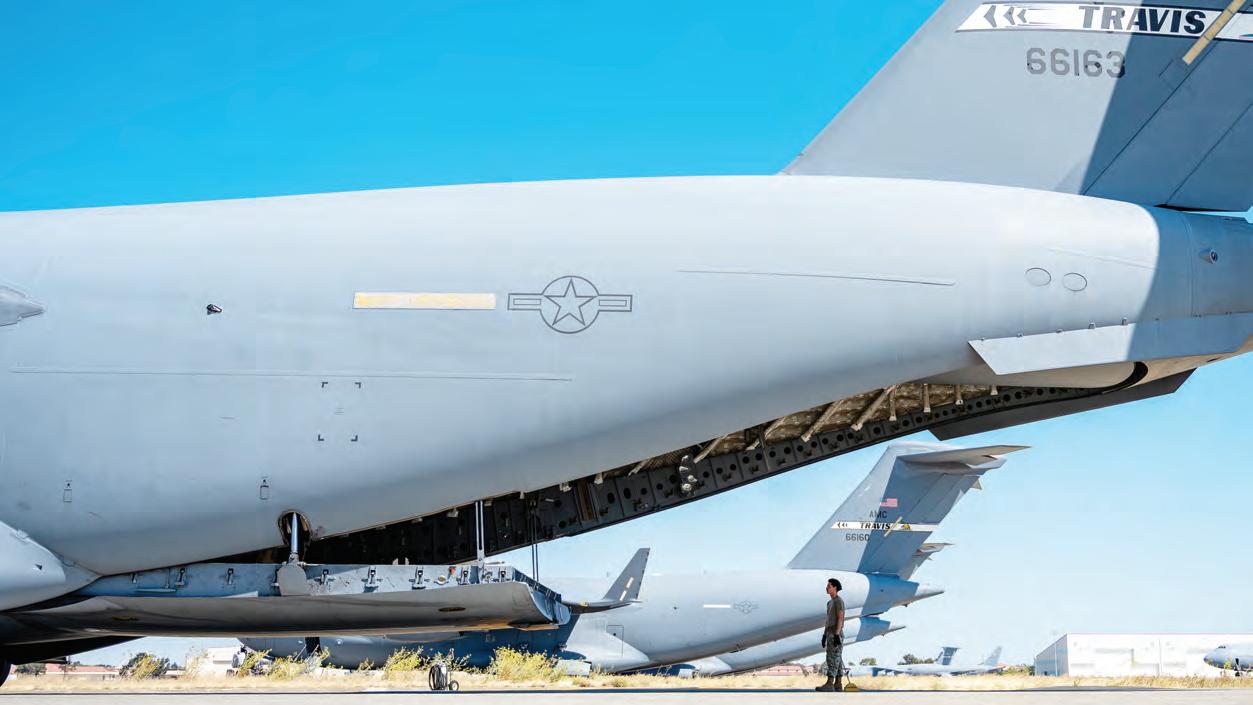
Reflecting realistic threats across all domains, participants conducted military operations using land, air, sea, space, and cyber assets. AMOS members contributed to this highly complex exercise by augmenting the Air Mobility Divisions at the 607th Air Operations Center at Osan Air Base, Korea, and the 613 AOC at Joint Base Pearl HarborHickam, Hawai’i. Personnel at each of these locations conducted combined command and control of assets in two theaters of operations, shared
See ULCHI, Page 3
Republic, 1250 Texas St., Fairfield, CA 94533.

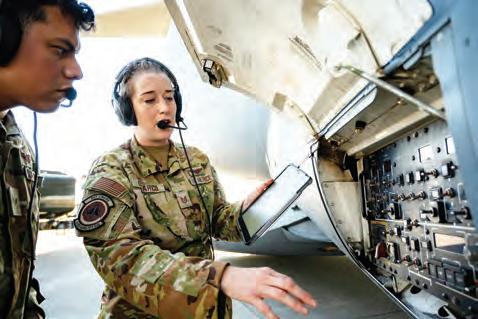



































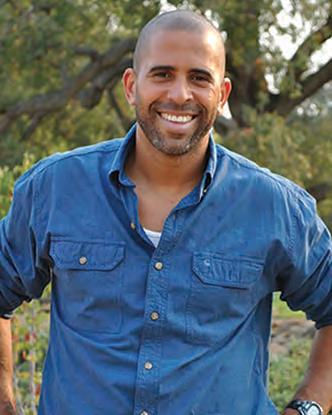






















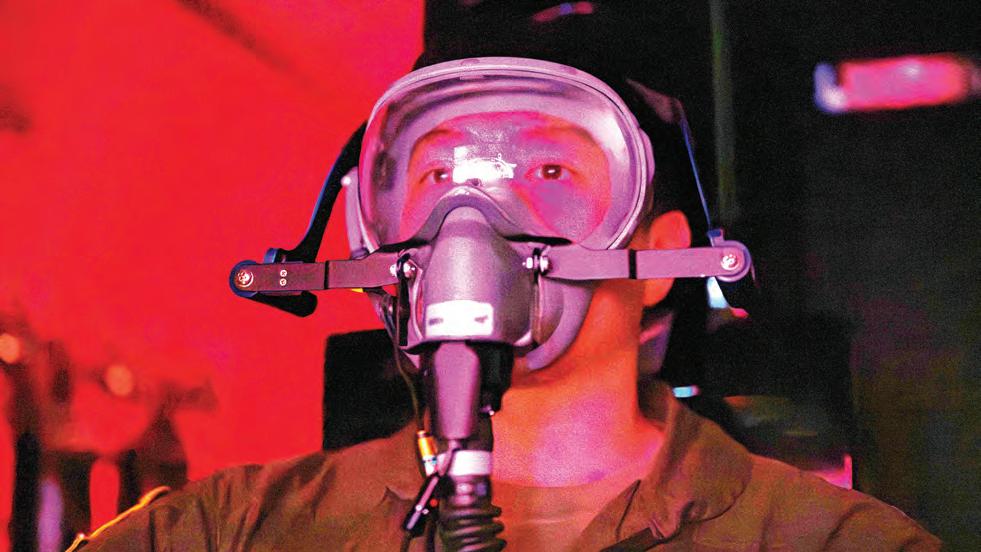
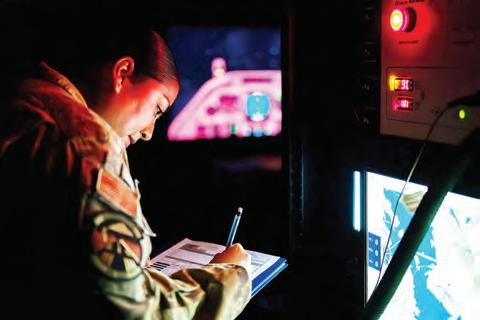
Secretary of the a ir force Public a ffairS
ARLINGTON, Va. —
The Department of the Air Force has announced the arrival of the second B-21 Raider flight test aircraft at Edwards Air Force Base, Sept. 11, significantly enhancing the Air Force’s capacity to conduct comprehensive testing and sustainment training.
The addition of the second aircraft expands the Air Force’s testing capabilities beyond initial flight performance checks, enabling progression into critical mission systems and weapon integration testing phases. This advancement marks a significant step toward operational readiness of the nation’s sixth-generation stealth bomber.

stresses and human factor implications in the flying environment to increase performance and mitigate mishaps.
on an ROBD delivers 100% oxygen to the airman via a quick don mask as part of hypoxia corrective procedures.
“With the arrival of the
second B-21 Raider, our flight test campaign gains substantial momentum,” said Secretary of the Air Force Troy Meink. “We can now expedite critical evaluations of mission systems and weapons capabilities, directly supporting the strategic deterrence and combat effectiveness envisioned for this aircraft. The presence of multiple test aircraft at Edwards AFB also provides Air Force maintainers invaluable hands-on experience in managing simultaneous aircraft sustainment operations, testing the effectiveness of maintenance tools, technical data and the logistical processes that will support future operational squadrons.
See B-21, Page 5
From Page 2
mission management and planning responsibilities, and supported each other through various contingencies that surfaced as part of the exercise.
In addition, members at the 607th AOC had the opportunity to work together with the Republic of Korea Air Force (ROKAF), ensuring the furtherance of a deep historical alliance forged in fire and preserved through common purpose.

Within the larger context of the exercise, AMOS airmen focused on aerial refueling, airlift, and aeromedical evacuation missions in and around the Korean Theater of Operations.
In one example, 17 simulated U.S. patients moved off-peninsula from an austere location from which no planes could depart. The U.S. and ROKAF medical teams collaborated to execute a ground movement supported by the ROKAF to a base across the peninsula, where the patients boarded a U.S. C-130 cargo plane for the flight to Japan.
“We have a common mission, and it is important to exercise operations together, especially when time is short,” said ROKAF Capt. Kang Hyejin.
In addition to the steady thrum of air operations, AMOS members at 607 AOC traveled to an alternate location to test their ability to maintain situational awareness and workload in a more austere environment along with their ROKAF counterparts.
“The ability to practice resilient continuity of operations is becoming commonplace; we also proved the value of working alongside other AOCs to bridge a potential information gap,” said U.S. Air Force Maj. Dave Carruth, 607th AOC Airlift Control team chief.
Every year, this series of exercises evolves to incorporate new chal-
lenges, additional complexity, and reflections of real-world possibilities to keep the training relevant and dynamic.
AMOS airmen, with some returning from previous years, encountered new scenarios and learned a great deal about

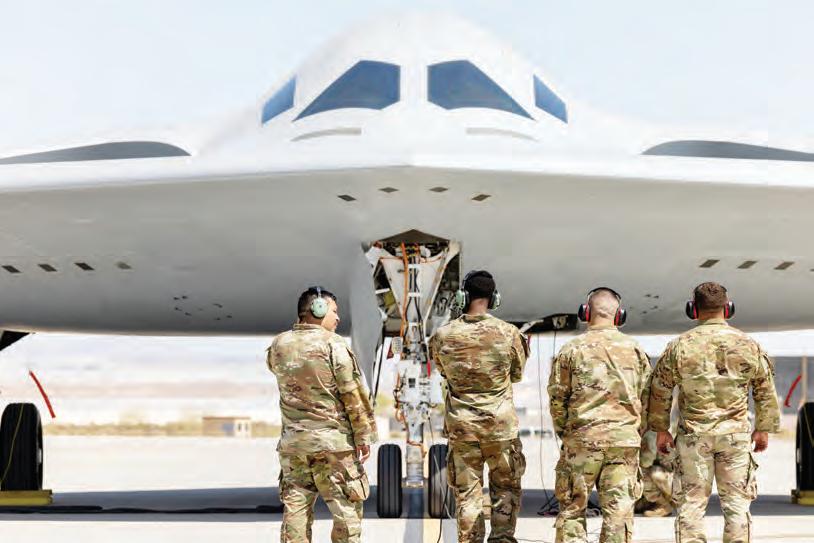
the theater and its unique mission set in addition to the invaluable contribu tions they made to UFS ’25’s ultimate success.
“UFS ’25 really pushed us. Every year they throw something new… some fresh curveball that mirrors what we might face downrange. You can’t just rely on what you learned before; you must adapt. This year, the scenarios were particularly complex, forcing us to really understand the theater and our mission. It’s tough, but it’s how we improve. Knowing we played a key role in the overall improvement of the exercise... that’s what makes it all worthwhile,” said U.S. Air Force Staff Sgt. Paul Chavis, 613th AOC airlift planner.















K enneth A bbAte 60TH AIR MOBILITY WING
TRAVIS AIR FORCE
BASE — The 60th Air Mobility Wing Equal Opportunity office hosted a three-day conflict resolution workshop Sept. 8-10, bringing airmen, civilian personnel and key support liaisons together for training on communication, problem-solving and team cohesion.
The workshop was part of the Department of the Air Force Negotiation and Dispute Resolution Strength Through Unity Tour, which equips leaders to resolve interpersonal conflict at the lowest level.
“The primary goal is to connect leaders at every level across the Travis AFB community with real tools and resources to address the individual strains and interpersonal tensions that erode unit cohesion and divert mission focus,” said Kimberly Mlinaz, director of Negotiation and Dispute Resolution. “These tools
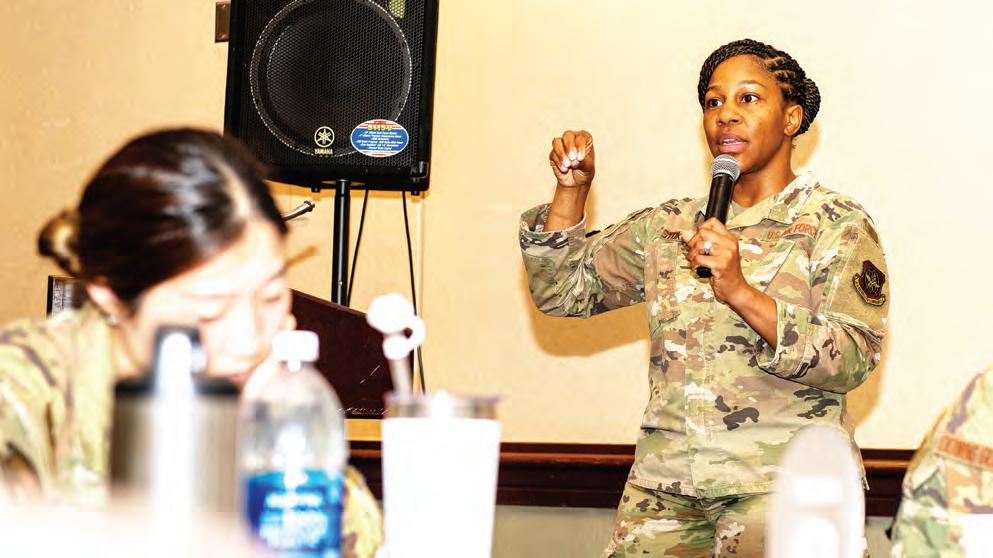
to inform a
also help leaders foster consensus, navigate complex challenges and engineer high-performing teams.” Training blocks were
tailored by leadership tier.
Feedback from both days informed a senior-level out-brief on Sept. 10. “I found the GROW (Goal, Reality, Options,
Will) process to be one of the most useful tools,” said 2nd Lt. Jordan Geer, 660th Aircraft Maintenance Squadron section commander. “As a super-
visor, airmen sometimes come to me with issues, whether work or personal, and expect me to find the solutions. Although that is part of my job, it is also
my job to give them the tools to solve problems themselves. By walking them through GROW, I can empower my airmen to take ownership of their issues. It’s about teaching them how to fish.”
The workshop not only provides airmen with problem solving solutions, but as U.S. Air Force
Master Sgt. Janay Stokes, 60th Air Mobility Wing Equal Opportunity superintendent, points out the training supports daily operations across the installation.
“This workshop supports airmen, civilians and key spouses by addressing real-world conflict scenarios that impact day-to-day functioning,” Stokes said. “Whether it’s resolving team friction, addressing miscommunication or handling sensitive issues, the tools are designed to foster understanding and maintain mission focus.”






























Sgt. Christian Von Denes, 621st Contingency Response Group sling load team lead, worked with the Naval Air Station Patuxent River F-35 Integrated Test Force test team, Naval Air Warfare Center Aircraft Division Cargo Lab, Marine Aircraft Group 31, and Marine Fighter Attack Squadron 533 to sling load an F-35B Lightning II airframe for the first time, Aug. 27.
Von Denes was requested by name from the Office of the Under Secretary of Defense for Acquisition and Sustainment and F-35 Joint Program Office.
“This milestone operation highlights the growing collaboration across military branches and affirms the 621st Contingency Response Wing’s role in advancing rapid deployment capabilities for next-generation aircraft,” Von Denes said.
He and his team worked alongside a Marine Corps Helicopter Support Team to perform a sling load of a non-flyable jet to show proof of concept, simulating recovery and
From Page 3
“In addition of a second B-21 to the flight test program accelerates the path to fielding,” said Air Force Chief of Staff Gen. David Allvin. “By having more assets in the test environment, we bring this capability to our warfighters faster, demonstrating the urgency with which we’re tackling modernization.”
Concurrent with the expanded flight-testing effort, fiscal year 2026 will see the launch of extensive military construction projects at all three designated B-21 main operating bases. Ellsworth AFB, South Dakota, the first base set to receive operational B-21 aircraft, is already progressing rapidly on numerous infrastructure projects to ensure readiness when the aircraft arrive.
“The B-21 Raider program represents a cornerstone of our strategic nuclear modernization,” Allvin added. “The con-
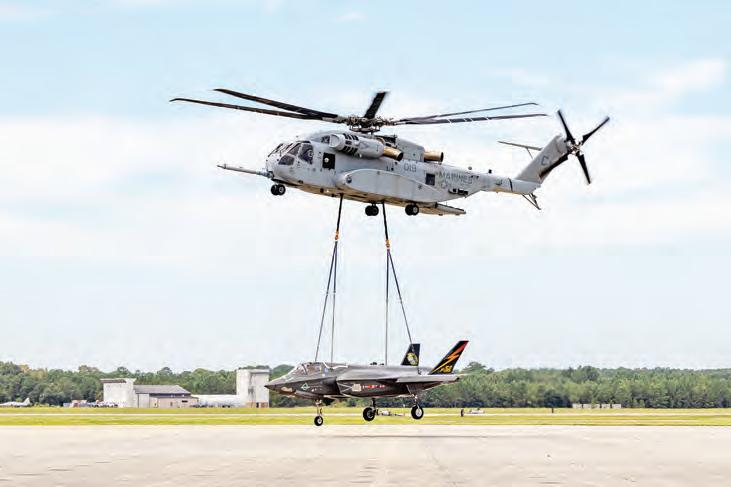
A Marine Corps heavy-lift Sikorsky CH-53K King Stallion helicopter off-loads a F-35B Lightning II after a long-range external lift operation at Marine Corps Air Station Beaufort, S.C., Aug. 27. The F-35B Lighting II aircraft, known as BF-1, was the first F-35B Lightning II variant ever built, ushering in a new era for Marine Corps Aviation.
maneuver. They ensured a successful lift and flight conducting load certification testing, sling configuration analysis, and cargo characteristic documentation.
“The meticulous preparation from my team at home station ensured the effective skillset which enabled the successful 500-mile CH-53K helicopter transport of the jet – marking a major step forward in agile logistics and future aircraft mobility testing,” Von Denes said.
Two weeks prior, Von
current efforts in testing, sustainment preparation and infrastructure investments clearly illustrate our commitment to providing unmatched capabilities to deter and defeat threats well into the future.”
Denes and Senior Airman
Gibert Lopez, 621st CRG sling load team member, conducted a crane test lift verifying the sling, rig, pitch and bank attitudes of the jet, as well as control surface states. The aircraft was transferred via CH-53K heavy lift helicopter more than 500 miles from NAS Patuxent River to Marine Corps Air Station Beaufort, S.C., to be put on display.
“We treated it like it was our jet going along for the ride,” Von Denes said. “It took weeks, if not months, to prepare for this
The B-21 Raider is a stealth strategic bomber designed to deliver both conventional and nuclear payloads, developed in partnership with Northrop Grumman under the oversight of the Air Force Rapid Capabilities Office. The program continues to execute its flight testing and ground testing campaigns as well as low-rate initial production.


operation. Working with the Marine HST was great, and I look forward to continuing this relationship in the future. This wasn’t just
Thom AS Br Ading AFOSI PUBLIC AFFAIRS
SANTIAGO, Chile —
Earlier this summer, the Air Force Office of Special Investigations-led Force Protection Detachment Chile partnered with the Carabineros Air Prefecture to host the first International Seminar on Operational Safety and Countering the Use of Unmanned Aerial Systems at the Air Prefecture facilities in Santiago.
The event, the first of its kind in Chile, brought together national and international police and military leaders to address the growing risks posed by unmanned aerial systems and strengthen cooperation in countering their misuse.
In doing so, it directly supports U.S. Southern Command and Air Forces Southern priorities.
As drones become more accessible, faster and harder to detect, they present new challenges for public safety and national security, said Special Agent Christian Rivera, AFOSI attaché to the FPD at the U.S. Embassy in Chile.
According to Rivera, the seminar highlighted the expanding role of drones in security operations and underscored the agencies aligned commitment to developing technological capabilities in service of public safety.
“Bringing so many experts together in one place is a force multiplier for public safety and security,” Rivera said. “Each agency brings unique capabilities, and this seminar allows us to combine that expertise to better counter unmanned aerial threats.”
See AFOSI, Page 8







































M
aster sgt
Mcintire
tristan
621ST CONTINGENCY RESPONSE WING
PUBLIC AFFAIRS
TRAVIS AIR FORCE
BASE — In today’s rapidly evolving battlefield, small unmanned aerial systems (sUAS), commonly known as drones, have become a pervasive threat to U.S. forces. These threats can compromise force protection, endanger lives, and hinder mission success in Agile Combat Employment (ACE) scenarios, for Contingency Response Airmen tasked with rapidly opening airbases and supporting air mobility missions worldwide.
Fortunately, the U.S. Air Force is not standing still. The 621st Contingency Response Wing (CRW) is pioneering innovative solutions to counter these emerging dangers.

Through collaborations with AFWERX engineers from the Air Force Research Laboratory and industry partners, the 621st CRW is developing and testing small-scale counter-UAS systems tailored for Contingency Response Elements (CREs) and Contingency Response Teams (CRTs). These efforts ensure that airmen are equipped to detect, track, identify, and defeat drone threats effectively.
One key initiative involves hands-on training with custom-built sUAS platforms. Security Forces airmen from the 621st CRW have worked alongside AFWERX engineers to assemble and maintain “red team” drones, such as a cost-effective system, which emulates adversary tactics seen in recent conflicts. Priced at oneeightieth the cost of similar off-the-shelf models, the
Master Sgt.
Staff Sgt. Brandon Redden, 820th Base Defense Group small Unmanned Aerial System (sUAS) program manager, demonstrates to airmen from the 621st
system allows airmen to simulate overhead threats during exercises, refining tactics, techniques, and procedures (TTPs) for passive defenses like hardening, dispersal, and camouflaging, as well as kinetic and non-kinetic countermeasures.
“The proliferation of sUAS has forced us to adapt the way we defend the base,” said Capt. Patrick Morin-Plante, Commander of the 621st Contingency Response Squadron. “Having organic red sUAS allows us to enhance our measures and gain the tactical advantage over adversaries.”
Using commercial and homemade drones to mimic real-world threats, the team tests systems that provide full-spectrum capabilities – from radar and radio frequency

detection to jamming, spoofing, and kinetic intercepts. These man-portable solutions are designed for quick deployment in diverse settings, ensuring CR airmen can maintain air superiority even with limited resources.
Master Sgt. Christopher Nicolay, superintendent of Wing Innovation for the 621st CRW, emphasized the value, “We can add features that enhance our training for this evolving threat, pushing our airmen to the edge of their capabilities safely and effectively.”
By incorporating lessons from global conflicts and partnering with industry, the 621st CRW accelerates change, modernizes force structures, and prepares for swarm or single-drone attacks.
Recent solicitations
of sUASs.
for counter-UAS equipment further demonstrate the wing’s commitment to realistic training, with all operations conducted in coordination with the FAA, air traffic controllers, and airfield management to ensure safety.
These developments offer strong reassurance for CR airmen: our forces are proactively addressing the sUAS challenge through innovation, rigorous testing, and collaboration. Master Sgt. Vang noted, “Our airmen need reliable tools that are quick to set up and effective, ultimately saving lives and securing airbases.”
Allocating resources to initiatives like these will enhance current readiness and safeguard future operations in contested environments.




From Page 1
the longest fighter combat mission in history, demonstrating the reach and flexibility of American airpower. In the Middle East, they delivered precision strikes with a high success rate, often taking on missions outside of their designed role.
By 1992, the end of the Cold War and the high maintenance costs of the F-111 brought its retirement in Europe. Its replacement, the F-15E Strike Eagle, continued USAFE’s focus on dualrole fighter-bombers with advanced avionics and greater flexibility.
Today, USAFEAFAFRICA carries forward the legacy of innovation that began with the Aardvark. The command now serves as the air component for U.S. European Command and U.S. Africa Command,
projecting combatready airpower across more than 100 nations. Its mission is to deter aggression, defend U.S. interests, and strengthen alliances through integrated training and agile combat employment strategies. Modern priorities include distributed command and control, forward basing, and interoperability with NATO and African partner forces. Recent exercises, such as Ramstein Flag 2025, showcased USAFE’s ability to operate from multiple locations, sustain high-tempo operations, and integrate seamlessly with allied aircraft to ensure collective defense readiness. From the F-111’s variable wings to today’s fifth-generation fighters and agile operations, USAFE has continually adapted to ensure that American airpower remains forward, ready, and reliable for its allies.
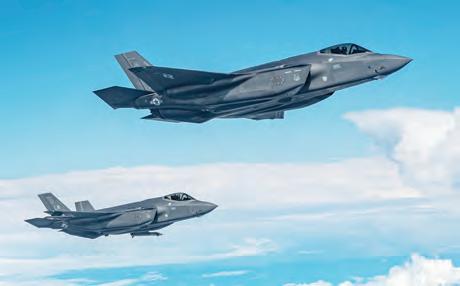
From Page 5
another job; it was a showcase of expertise, proving that attention to detail on the ground translates directly to groundbreaking achievements in the air. Additionally, it shows that we’re always ready to recover critical assets, wherever and whenever they are needed most.”
The F-35B, known as BF-1, was the first F-35B to perform a vertical landing. It was without its mission and propulsion systems, outer wings, additional equipment and will be used as a permanent static display at MCAS Beaufort. This is the second time the CH-53K has been used to transport an F-35 that was destined for usage after required flight test activities.















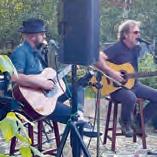











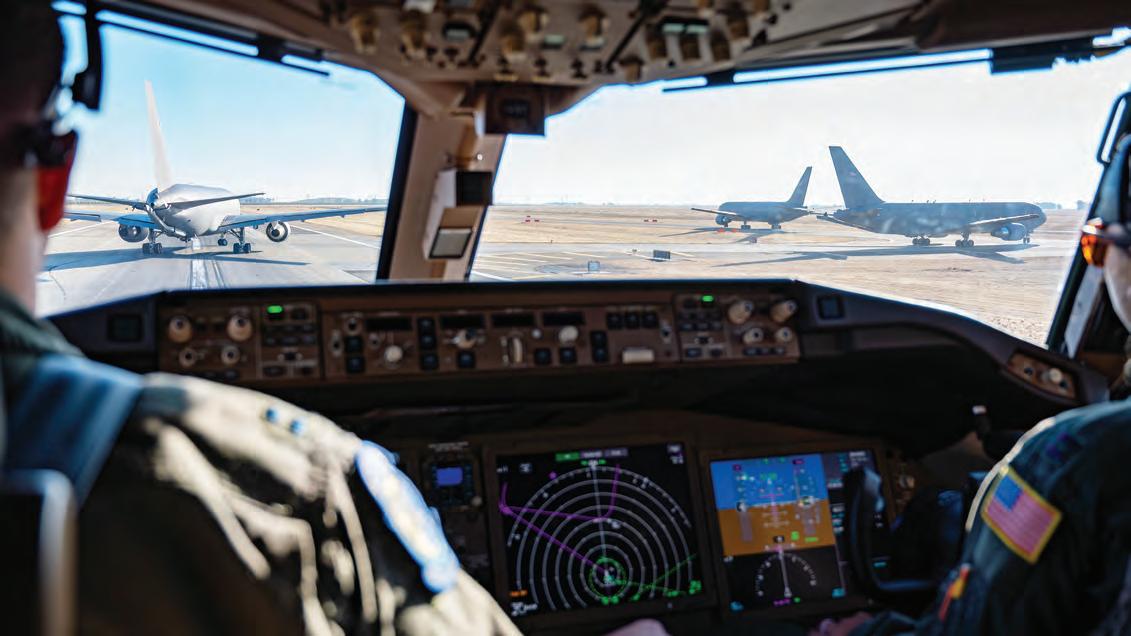
From Page 5
Among the attendees were Acting General Director of Carabineros Inspector General Enrique Monrás and U.S. Embassy Chargé d’Affaires Richard Yoneoka, along with AFOSI Special Agents, the Texas Air National Guard, the New York Police Department Counterterrorism Division, U.S. Southern Command and U.S. Customs and Border Protection.
Chilean participants included specialists from Carabineros de Chile, the Investigative Police, Gendarmería, the General Directorate of Maritime Territory and Merchant Marine (DIRECTEMAR), the Directorate General of Civil Aviation and multiple military organizations.
Col. Javier Álvarez, head of the Carabineros Air Prefecture, said the event was “a testament to the professional commitment of all participants to the responsible development and use of new technologies.”
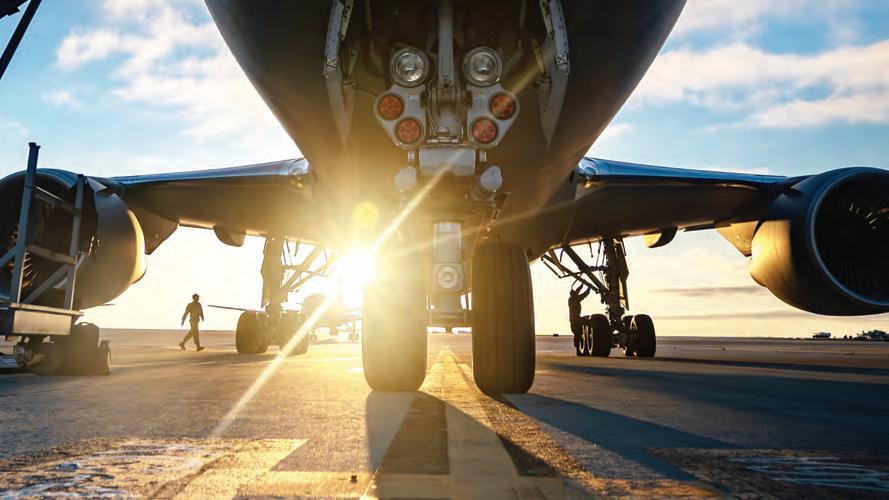
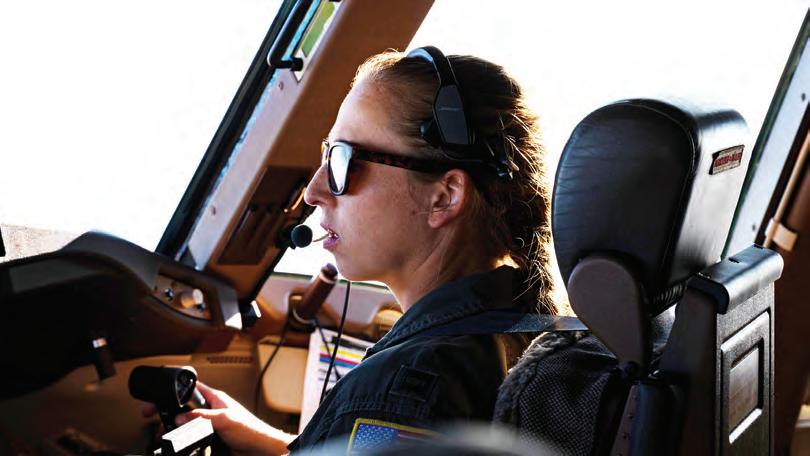
According to Álvarez, the event reaffirmed Carabineros’ conviction to incorporate modern tools that enhance police
functions and strengthen institutional operations.
In addition, the weeklong seminar included presentations and panels where participants shared operational experiences, discussed air safety regulations and explored usage standards for unmanned aerial systems in both urban and rural environments.
“Our goal was to make this seminar a lasting platform for international cooperation,” said Assistant Attaché Alejandro Mora, NCIS. “By working together, we can strengthen the strategic use of drones to support public order and security missions worldwide.”
According to the FPD and Chilean counterparts, the event was part of a broader initiative to strengthen institutional operations through technological innovation, improving crime prevention, public order control and emergency response capabilities.
“Initiatives like this are vital to strengthening our global partnerships and enhancing operational safety,” Rivera said. “As drones become an increasingly critical tool in security and defense, seminars like this help ensure we’re prepared to work together effectively across borders.”
